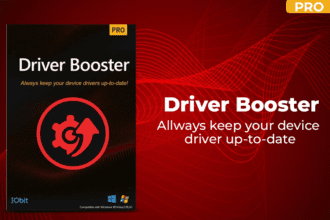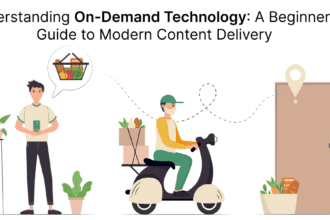
Today, with the digital age added to our lives, it is not just complimentary thinking to have your website accessible to all, but much more necessary. Making sites accessible to the web means creating and developing them in such a way that users with disabilities can interact with them seamlessly.
Since digital marketing is all about online presence, so knowing about web accessibility and implementing accessibility remediation strategies could not only increase audience but also strengthen brand reputation.
In the course of this article, you will learn the basic concepts of web accessibility, and actionable ways of addressing issues that make it hard for people to use your website.
Understanding Web Accessibility
Web accessibility remediation is a process when a website is created or firmed with a specific focus on people’s disabilities such as visual, auditory, physical, speech, cognitive, and neurological ones. Those, who are visually impaired, deaf, have limited mobility, or face any other problems are all included.
An accessible website guarantees this for everyone with disabilities as well as for anyone else who can’t see the content, know what it means, or use the site effectively.
Why Web Accessibility Matters for Digital Marketers?
- Expanded Audience Reach: By letting your site be accessible, you provide the opportunity for a wider audience and those with disabilities, in a way that you were depriving them previously.
- Improved SEO: Such features of accessibility that overlap SEO best practices often include alt text for images that will be descriptive and well-structured content. This could translate to a higher ranking position of your website in search engine results.
- Enhanced Brand Reputation: By making accessibility one of your ethical principles, your company will be perceived as one of the good guys and that would draw customers who have it as part of their value system.
Key Accessibility Guidelines For Digital Marketers
- Provide Alternative Text for Images: The alternative text (alt text) is a short description of the picture that is read out by the screen readers blind people who serve as their eyes. Use descriptive alternative text to be the images’ mouths and express the images’ meanings and contexts to users who happen to be visually impaired.
- Use Semantic HTML: Apply HTML elements appropriately therefore your web content is structured accurately and its meaning is emphasized. For instance, <h1> should be used for the main headings, then <h2> for subheadings and then so on.
- Ensure Keyboard Accessibility: Ensure that the keyboard shortcuts are available to the website’s full functionality. This is especially important for those who cannot mouse around.
- Provide Captions and Transcripts for Multimedia Content: For video as well as for audios content, offer captions as well as the transcript to make the content available for deaf or hard-hearing people.
- Use High Contrast Colors: Make sure there is a high contrast between text and background color to enable reading for those who have low vision or color blindness.
- Design Consistent and Predictable Navigation: Make the site’s navigation and structure simple and repetitive so clients easily understand how to navigate the site and can find what they need.
- Make Forms Accessible: Provide that the forms on your site are accessible with the use of relevant labels, fieldsets, and legends. This perfectly suits the need of the screenreaders to read and understand the form properly.
- Test Accessibility Regularly: Leveraging the accessibility testing tools and also doing manual tests will help you discover and resolve the accessibility issues on your website. Routine testing is responsible for making sure that the site is always accessible and is improving with time.
Accessibility Policy Reform Strategies for Digital Marketers
- Audit Your Website: Carry out a general assessment of your website for accessibility issues and clarify those issues. This can be achieved using automated tools, manual tests, or hiring accessibility experts.
- Prioritize Remediation Tasks: Once you know what web accessibility remediation you need, select where to start your work on them in terms of the influence on users and the hardness to solve them. Begin with quick-action items like those that are easier to solve and that have a high impact.
- Educate Your Team: Sensitize your team members, including designers, developers, and content creators, on web accessibility best practices. This makes sure that accessibility is taken into account all along the website life cycle. It is not just a checkbox feature.
- Implement Accessibility Features: Implementing features such as ARIA (Accessible Rich Internet Applications) attributes and landmarks for the dynamic web content accessibility purpose is mandatory.
- Provide User Feedback Mechanisms: Give a chance for users to highlight accessibility barriers that they experienced on your website. It can facilitate the discovery and elimination of the accessibility barriers that are likely to have been glossed over previously.
- Stay Updated: Make sure to follow the recent website accessibility requirements and norms, including the Web Content Accessibility Guidelines (WCAG), and then apply them to your website.
Strategies That Facilitate Web Accessibility
Here are some of the proven strategies that will help you with your web accessibility remediation process:
1. Provide Clear and Descriptive Link Text
When you are providing hyperlinks, make sure you use explicit instructions that concisely tell where the link’s destination is or what its purpose is. Screen reader users frequently go through links on a page to get a hang of the page components. Likewise, simply replacing the usual phrases such as “Click here” or “Read more” with phrases such as “View our pricing plans” or “Read the full article on web accessibility.” is also helpful.
2. Ensure Video Accessibility
In addition to captions and transcripts, videos should be navigable and easily comprehendible to the audience who is visually impaired. Use ARIA attributes to provide the user with additional data about video player controls and playback status. Furthermore, believe in offering audio description for visual points that are critical for understanding the material.
3. Optimize Forms for Accessibility
Forms that can be found on numerous sites represent one of the significant issues for people with disabilities. Moreover, the forms should have clear instructions and error messages displayed to users. Implement ARIA roles to make clear what type of form objects are the input fields, buttons, and error messages, so that screen reader users can fill out a form correctly.
4. Implement Responsive Design
According to the web accessibility remediation process. Be sure that your website is responsive and adjustable to the different screen parameters and devices. People of different disabilities may use many kinds of devices which could be smartphones, tablets, and special technologies like magnifiers or braille displays. Responsive design guarantees that users always have the same intuitive and userfriendly experience no matter the device they are using.
5. Provide Skip Navigation Links
Substantial screen readings for users with these screen reading devices will become troublesome and tedious if the content is repetitive. Integrate a “skip navigation” buttons, at the start of each page, which would help users to jump over the repetitive material and go directly to the main content section. This gives better efficiency and in turn usability for both the keyboard and the screen reader users.
6. Consider Cognitive Accessibility
Moreover, web accessibility is not only for disabled people including those with cognitive disabilities such as dyslexia, ADHD, and autism spectrum disorders. Develop your website design through a user-friendly and uncomplicated allocated schema, and keep far from overburdened layouts as well as very detailed language. Break content into manageable sections, jot down smaller points and lists, and write clear headings to assist comprehensibility.
Conclusion
Implementing web accessibility in marketing strategies is more than just being obligated- it is equality and assurance that the website is meant for people with all manner of disabilities. Following the directives in this article and adopting the accessibility remediation method, you would put forward more including visual and hearing impaired users in the online world, and therefore gain from an enhanced audience reach, strengthened website optimization in terms of SEO, and improvement of the brand’s image. Recall that inclusive design is not just a requirement for site and brand design—it is an ongoing process of working towards universally accessible and inclusive website design.








